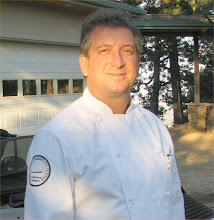 |
Someone once said that we sit on the (meditation) cushion, lifting light weights, so that when we are off of the cushion, in our regular lives, we will be strong enough to lift the heavy weights that life throws at us.
When I first heard that I liked it a lot. But I felt that it wasn’t quite right. I have decided that in fact it is sort of backwards. I say that when we sit on the cushion, we practice putting down light weights, so that when we are off the cushion, we know how to put down life's heavy weights.
In our lives we are handed heavy weights. These weights cause suffering. We hold onto these weights and carry them around. Often these weights are so heavy that we cannot bear them, and yet, we still don’t know how, or aren't willing, to put them down, to let them go.
In the quest for an end to suffering, we need to know how to set these weights down. On the cushion, we let go of the thoughts endlessly assaulting our minds. We are learning to put down light weights over and over again.
We need this practice because off the cushion, when we set heavy weights down, we often discover that we are somehow still holding them. We set them down over and over again, but they magically leap back into our hands, onto our shoulders, and onto our backs. Or, we don’t set them down at all. Though we can't bear to carry them, it can turn out to be harder still to let these things go, set them down, and walk away.
With practice setting down the light weights of the mind, we know how to recognize the heavy weights that we carry, and how to put them down, and put them down, and put them down again.
About a year ago I was carry a heavy weight of my own creation. This is when I began thinking about the role of meditation in letting go of the hardships that we seem to hold onto for dear life. At the time, this is what I wrote:
I'm holding a weight. It’s a very heavy weight. It's a very heavy weight, but I can’t get myself to let it go. It hurts. This weight hurts. If I just set it down, it won’t hurt so much. If I just set it down it will go away all on its own. The Buddha tells us that all things are impermanent, and this weight is impermanent, and it will go away all on its own. It will go away if I hold onto it, and it will go away if I set it down. But if I set it down, while it is going away, it won’t hurt. Or, at least, it won’t hurt so much.
I don’t have to throw it away, which is good because I’m not that strong. I'm not strong enough to throw this heavy weight, but I can put it down. I can put it down, and it will still be there; I can still look at it; I can see it and understand it and be with it; I won’t have abandoned it; but it won’t hurt as much.
I've lifted weights like this before. It was a long time ago, and the conditions and circumstances were different, and I was someone different. When I lifted this weight before, I hugged it to my chest. I hugged it to my chest, and I rocked back and forth, and it hurt. It hurt so much. It hurt so much that I couldn’t be in the world anymore. I had to leave the world for a while. I hugged that weight to my chest and I fed it. I fed it, and it bit into me, and it lasted, and it lasted, and it lasted as I protected it, as I held it in my arms, as I fed it. Ultimately it too was impermanent, as all things are impermanent. It went away, but if I had just set it down, it would have gone away much more quickly, and while it was going away it wouldn’t have hurt. It would have just been. It would have been a heavy weight that I had put down.
I am holding this heavy weight. I set it down. Now my arms are free to do other things. But then I pick it up again. I pick it up again, and it bites into me, and I hurt all over again. It’s not that I can’t stop picking it up, it’s that I don’t stop picking it up. I’m not aware of picking it up, but I find myself holding it again.
Over the years I have held many heavy weights. When my dog died, when my father died, when my mother died. These were heavy weights that I held. These were heavy weights that hurt. But I learned to put them down. Not to throw them away. Not to hate them. Not to fear them. Just to set them down and let them be. Over time they went away, because they were impermanent.
So now I know how to set down a heavy weight. I put it down, and the relief is palpable, but then, hours or days later, I pick it up again.
I'm holding a weight. It’s a very heavy weight. It's a very heavy weight, but I can’t get myself to let it go.
And then I set it down.

























